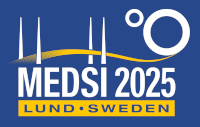Speaker
Description
Permanent Magnets (PM) have been widely used in Synchrotron Light Sources for insertion devices and recently for the accelerator multipole magnets. The NSLS-II accelerator upgrade is based on the complex bend lattice that will use combined function permanent magnet-based dipole-Quadrupole (PMQ)*. These PMQ’s need to be characterized and tuned to make sure the required field harmonics can be achieved. The Halbach type design is considered for the PMQs. To achieve the required field quality with the Halbach PMQ, a field harmonic correction method based on assembly of small PM blocks called “Magic fingers” (MF) is developed. This paper presents the radial MF magnetic and mechanical design, the prototype and the correction results.
Footnotes
$*$ Shaftan, Timur, et al. "Concept of the Complex Bend." , Jan. 2018. https://doi.org/10.2172/1504393

